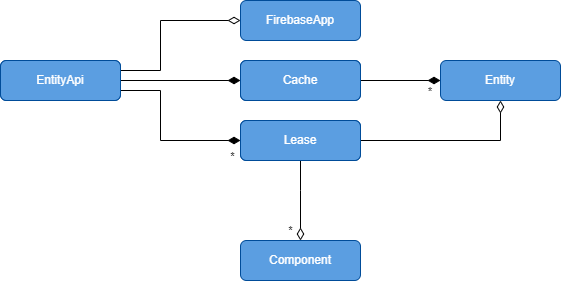Key Concepts
Before digging into details of the react-firebase-state library, it is helpful to understand the conceptual model illustrated below.

Entity
We use the term Entity for any data element, whether server-side or client-side. React components use entities to render views of the data.
Cache
Entities are stored in a local Cache.
Lease
Certain entities, such as data objects from Firestore documents, are governed by a Lease. The Lease maintains a ledger of all the components that require the Entity for rendering. When a component is added to the ledger, we say that the component claims the associated Entity. When a component is removed from the ledger we say that its claim has been released.
Components claim entities by invoking useEntity, watchEntity or setLeasedEntity.
The useReleaseAllClaims hook releases all claims held by a given component when that component unmounts.
It is also possible to release a specific claim by invoking releaseClaim.
A leased entity remains in the cache as long as there exists at least one component that claims the entity. When there are no more claims, the entity is not evicted from the cache immediately. Instead, the entity will remain in the cache for a certain amount of time until it is garbage collected. The amount of time that an unclaimed entity remains in the cache is given by the abandonTime configuration parameter which is set to five minutes by default.
The policy of keeping unclaimed entities in the cache for a certain amount of time means that the user may navigate away from a component briefly and then come back and the required entities will still be available immediately without having to fetch them again from the server.
When the user navigates back to the component, a new claim is established, and consequently the leased entity is no longer eligible for garbage collecting.
Component
The discussion above assumes that components are React components, and that is usually true but not strictly required. Leases reference components by name. You can give a name to any logical part of the application and arrange for that part to claim entities.
A component that has a claim on some entity is called a leasee.
EntityApi
Nearly all of the capabilities of the react-firebase-state library are exposed through hooks or functions that leverage an EntityApi instance to do their work.
The EntityApi provides access to the Cache, Leases and the FirebaseApp object.